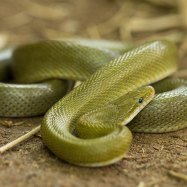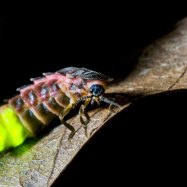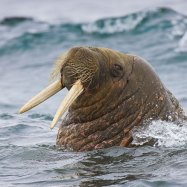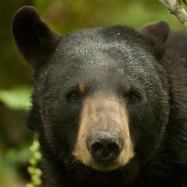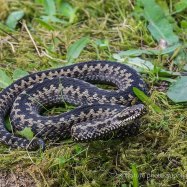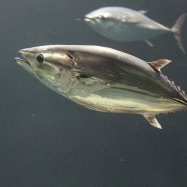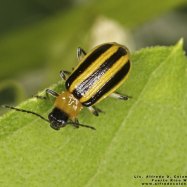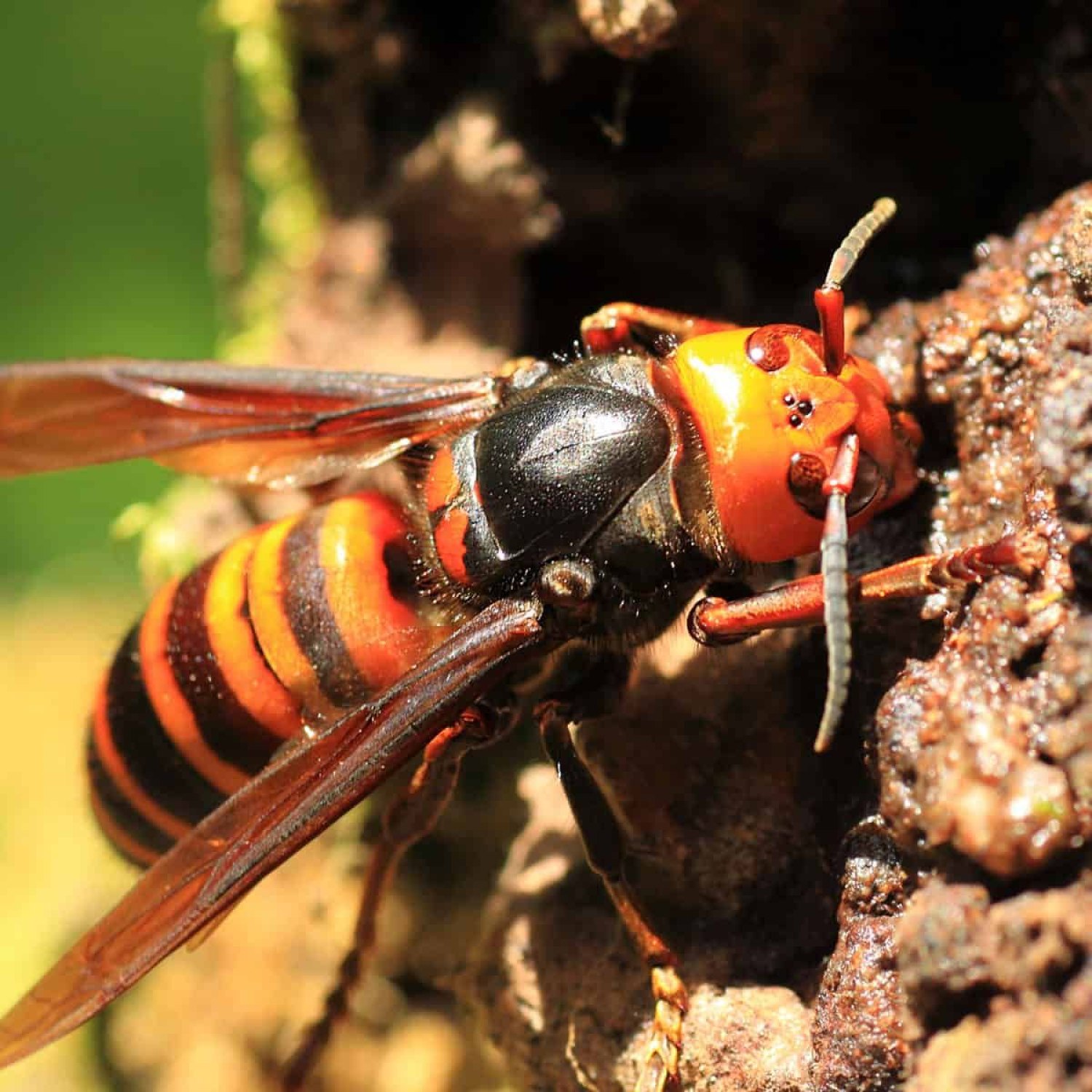
Hornet
1 to 2 inches
Discover the ferocious hornet, a tiny but mighty insect that can range from 1 to 2 inches in length. Found on every continent except Antarctica, these buzzing creatures belong to the Vespidae family and have a slender, elongated body shape. While they may seem small, their powerful sting makes them a force to be reckoned with!
Animal Details Summary:
Common Name: Hornet
Kingdom: Animalia
Habitat: Various habitats including forests, woodlands, meadows, gardens
Hornets: The Fierce and Fascinating Insects of the World
When we hear the word "hornet," it may conjure up images of a dangerous and aggressive insect. And while this may be partly true, there is much more to these creatures than meets the eye. They are not just winged terrors, but also fascinating creatures with unique behaviors and features that make them one of the most interesting species of insects in the world.Scientifically known as Vespa, hornets are insects that belong to the family Vespidae and the order Hymenoptera Hornet. They are found in various habitats all around the world, except for Antarctica, making them a truly global species. They have been a subject of human fascination for centuries, with mentions and depictions in literature, art, and even ancient civilizations.
So what makes hornets stand out among other insects? Let's take a closer look at their characteristics, habitats, behavior, and the fascinating world of these buzzing creatures.
Appearance and Body Features
Hornets are known for their distinctive black and yellow coloration, similar to that of a bumblebee. However, they are much larger in size, measuring around 1 to 2 inches in length. Unlike other insects, they have large eyes, which give them excellent vision, helping them navigate and hunt for prey. They also have powerful mandibles for chewing and a stinger on their abdomen, which they use for defense.Their body shape is also quite unique, with a slender and elongated abdomen and a narrow waist. This unique structure gives them quick and agile movements, making them skilled hunters Hawk Moth Caterpillar. They also have six legs and two pairs of wings, which enable them to fly at high speeds and maneuver through the air with ease.
Habitat and Distribution
Hornets are a highly adaptable species, and they can be found in various habitats, including forests, woodlands, meadows, and even gardens. They are not picky about their surroundings, as long as there is a source of food and shelter.Perhaps one of the most impressive facts about hornets is their global distribution. They can be found on every continent in the world, except for Antarctica. This widespread distribution shows their success as a species and their ability to thrive in different environments.
Diet and Feeding Behavior
Hornets are known for their carnivorous diet, and they are skilled hunters. They primarily feed on other insects, such as flies, bees, and even other hornets. They are also known to attack larger prey, such as grasshoppers and dragonflies.Their feeding behavior is quite fascinating, as they are not just solitary hunters but also hunt in groups. They work collaboratively to bring down their prey, with each member playing a specific role. Some hornets distract the prey while others attack from behind, utilizing their powerful mandibles and stingers to immobilize the victim.
Once the prey is subdued, hornets will then carry it to their nest, where they feed it to the larvae. This social behavior and division of labor within the colony make hornets one of the most intelligent and advanced insects in the world.
Social Structure and Nest Building
Hornets are social insects, which means they live in large colonies with a strict social hierarchy. Each colony can consist of hundreds to thousands of individuals, with a queen leading the group. The queen is responsible for laying eggs and maintaining the colony's population, while the other members take on various tasks such as hunting, foraging, and nest building.What sets hornet nests apart from other insect nests is their unique construction. Unlike paper wasp nests, which are made of chewed wood and saliva, hornets use a combination of wood fibers, plant sap, and their saliva to build their nests. This blend creates a water-resistant and sturdy structure, capable of withstanding winds and rain.
Dangers and Threats
Hornets may have a fierce reputation, but they only attack when threatened or when their nest is disturbed. They are, however, more aggressive than other insect species and can cause injury or even death to humans if stung repeatedly.But the real danger comes from the Asian giant hornet (Vespa mandarinia), the largest species of hornet in the world. These massive insects can measure up to 2 inches in length and have powerful stingers that can penetrate through protective gear. They are also known to be highly aggressive and can deliver a potent venom, which can be fatal to humans.
Conservation Status and Human Impact
Hornets are not listed as an endangered species, and their populations seem to be stable for now. However, their habitats are facing threats from human activities such as deforestation, use of pesticides, and climate change. These factors not only affect hornets but also other insect species and have a cascading effect on the ecosystem.One of the main concerns is the decline of pollinator populations due to insecticides, which can have a detrimental impact on the environment and food production. Hornets, despite their ferocious nature, also play a vital role as pollinators, and their decline can have a domino effect on the ecosystem's health.
Fascinating Facts about Hornets
- The Asian giant hornet is the world's largest hornet, with a wingspan of over 3 inches.- Honeybees are one of the few species that can defend against hornet attacks by heating up their bodies, effectively cooking the invading hornets.
- Hornets are also known to produce a buzzing sound, rather than the typical buzzing noise of other insects.
- Their venom contains a powerful neurotoxin called mandaratoxin, which can cause severe pain and paralysis in humans.
- The queen of the colony can live for up to a year, while the worker hornets only survive for a few months.
The Role of Hornets in the Ecosystem
Like all living creatures, hornets play a crucial role in the ecosystem, and their presence is vital for maintaining balance. As predators, they keep the population of other insect species in check, preventing overpopulation and supporting the food chain.Hornets, like other pollinators, also contribute to plant growth and reproduction. They play a significant role in pollinating a variety of plants, including fruits and vegetables, which are important for human consumption.
In Conclusion
Hornets may have a notorious reputation, but they are more than just fierce and aggressive insects. With their impressive adaptations, unique behaviors, and crucial role in the ecosystem, they are truly fascinating creatures that deserve our admiration and respect. While it is essential to be cautious around them, it is equally crucial to understand and appreciate their role in the natural world. So next time you come across a hornet, remember the incredible creatures they are and the important part they play in our ecosystem.

Hornet
Animal Details Hornet - Scientific Name: Vespa
- Category: Animals H
- Scientific Name: Vespa
- Common Name: Hornet
- Kingdom: Animalia
- Phylum: Arthropoda
- Class: Insecta
- Order: Hymenoptera
- Family: Vespidae
- Habitat: Various habitats including forests, woodlands, meadows, gardens
- Feeding Method: Carnivorous
- Geographical Distribution: Worldwide
- Country of Origin: Not specified
- Location: Every continent except Antarctica
- Animal Coloration: Black and yellow
- Body Shape: Slender and elongated
- Length: 1 to 2 inches
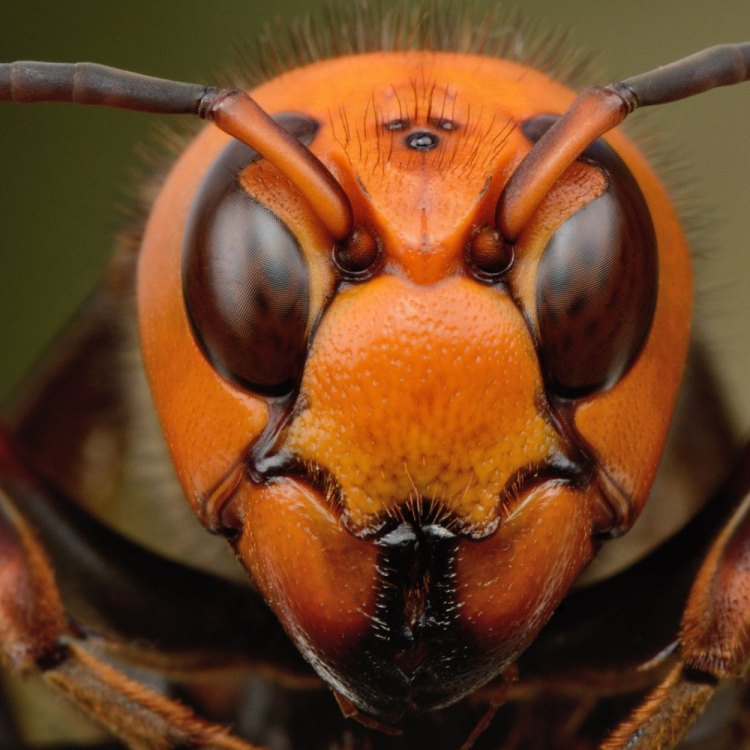
Hornet
- Adult Size: Large
- Average Lifespan: Several months
- Reproduction: Sexual
- Reproductive Behavior: Mating occurs in the late summer or early autumn
- Sound or Call: Can produce a buzzing sound
- Migration Pattern: Non-migratory
- Social Groups: Colonies
- Behavior: Aggressive and territorial
- Threats: Predation, habitat loss
- Conservation Status: Not evaluated
- Impact on Ecosystem: Pollinators and pest control
- Human Use: None specified
- Distinctive Features: Large size, black and yellow coloration, stinger
- Interesting Facts: Hornets are known for their aggressive nature and painful sting
- Predator: Birds, mammals, reptiles
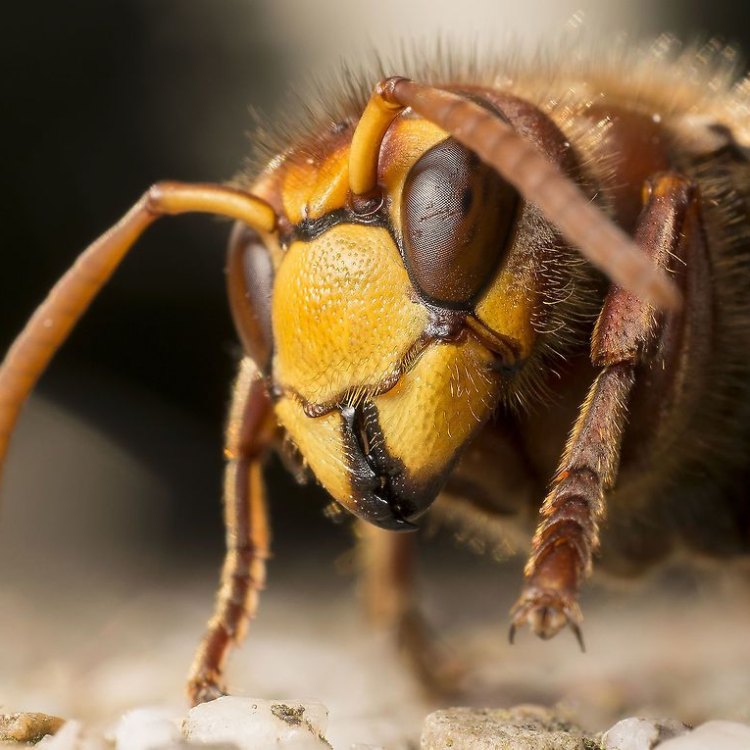
Vespa
The Mighty Hornets: Nature's Most Aggressive Pollinators and Pest Controllers
If you've ever seen a hornet flying around, you know how intimidating they can be. Their large size and yellow and black stripes are a warning to stay away. And with their painful stinger, it's best to heed that warning. But beyond their fierce exterior, hornets play an important role in our ecosystem as pollinators and pest controllers PeaceOfAnimals.Com.Hornets are fascinating creatures that have captured the attention of researchers and the public for centuries. From their reproductive behavior to their distinctive features, there is still so much to learn about these powerful insects.
Adult Size and Average Lifespan
Let's start with their size. Hornets are classified as large insects, with the average adult size ranging from 1-2 inches in length. This is significantly bigger than the average bee or wasp, making them one of the largest flying insects in the world.
Despite their size, hornets have a relatively short lifespan of several months. This may seem short, but it is actually longer than many other social insects like bees and ants.
Reproduction and Mating Behavior
Hornets reproduce sexually, with males and females engaging in a unique mating behavior. This occurs in late summer or early autumn, which is why you may see more hornets during this time of the year Havashire.
During mating, the male hornet will fly around the female, releasing pheromones to attract her. If she is interested, she will release her own pheromones, signaling that she is ready to mate. The pair will then fly to a secluded area where the male will fertilize the female's eggs. After mating, the male will die and the female will become the sole queen of the colony.
Sound or Call
While you may think of bees when you hear the buzz of an insect, hornets are also capable of producing a buzzing sound. This is a result of their powerful wings beating at a rapid pace as they fly. However, hornets also use this buzzing sound as a form of communication with other members of their colony. They can produce different frequencies and patterns to signal alarm, defend their territory, or call for help.
Non-migratory Nature
Unlike some insect species, hornets do not migrate during the winter months. They are considered to be non-migratory, meaning they stay in the same area year-round. This can be attributed to their ability to withstand colder temperatures and hibernate during the winter months. It is also a result of their territorial behavior, as they fiercely defend their nests and food sources.
Colonial Social Groups and Aggressive Behavior
Hornets are social insects and live in colonies. These colonies can range in size from a few dozen to thousands of individuals. Within the colony, there is a strict hierarchy, with the queen at the top and the workers performing different tasks to ensure the survival and growth of the colony.
One of the most distinctive behaviors of hornets is their aggressive and territorial nature. They are highly protective of their nests and will attack anyone or anything that comes too close. This includes humans, who can easily provoke a hornet due to their size and coloration. This aggressive behavior is also seen among members of the same colony, as workers will defend their territory and food sources from intruders.
Threats to Hornets and Conservation Status
While hornets may seem like invincible creatures with their intimidating appearance and aggressive behavior, they are actually at risk from a number of threats. These include predation by birds, mammals, and reptiles, as well as habitat loss due to urbanization and climate change.
Unfortunately, despite their ecological importance, hornets have not been evaluated for conservation status by any major organizations. This means that we do not have a clear understanding of the population trends or the extent of their decline in some areas. However, efforts are being made to better understand and protect these creatures, especially in areas of the world where they are endangered or threatened.
Impact on Ecosystem and Human Use
Hornets play a crucial role in the ecosystem as pollinators and pest controllers. As they fly from flower to flower, they transfer pollen and allow plants to reproduce. They are also important for pest control, as they feed on other insects like flies, wasps, and bees, which can help protect crops and plants from infestations.
While hornets have not been extensively used by humans, there are some traditional and cultural uses for certain species. In some parts of Asia, hornet larvae and pupae are considered a delicacy and are used in cooking. However, this is not a widespread practice and is mainly limited to certain regions and cultures.
Distinctive Features and Interesting Facts
When you think of hornets, the first thing that comes to mind is probably their large size and black and yellow coloration. These features are not only distinctive but also serve as a warning to potential predators and competitors to stay away. But there is more to hornets than just their size and color.
Did you know that hornets are one of the most aggressive insects in the world? While their sting is painful, it's their aggressive nature that makes them a force to be reckoned with. They will not hesitate to defend their nests or food sources, and their aggressive behavior is one of the main reasons they are feared by humans.
Predators of Hornets
Despite their aggressive behavior, hornets do have natural predators. Birds, such as blue jays and robins, are known to feed on hornets' nests and larvae. Mammals, like raccoons and skunks, are also known to prey on hornets, often targeting them at night when they are less active.
Reptiles, such as lizards and snakes, may also feed on hornets, but they are more likely to avoid them due to their aggressive nature and painful sting. In fact, some reptiles have developed a resistance to hornet venom, allowing them to consume these insects without any ill effects.
Conclusion
In conclusion, hornets are fascinating creatures with a unique set of characteristics and behaviors. From their reproductive habits to their distinctive coloration, there is still so much to discover about these insects and their role in the ecosystem.
While they may be feared by many, it's important to understand the vital role hornets play in pollination and pest control. By better understanding these creatures, we can learn to coexist with them and appreciate their important contributions to our environment. So the next time you see a hornet flying around, remember that these mighty insects are more than just aggressive stingers – they are essential players in our natural world.
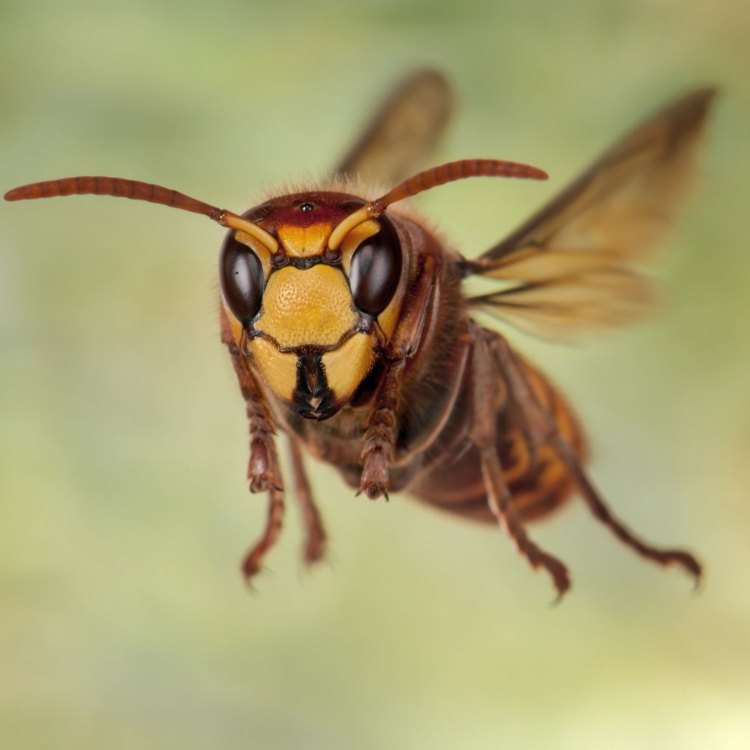
Hornets: The Fierce and Fascinating Insects of the World
Disclaimer: The content provided is for informational purposes only. We cannot guarantee the accuracy of the information on this page 100%. All information provided here may change without prior notice.


